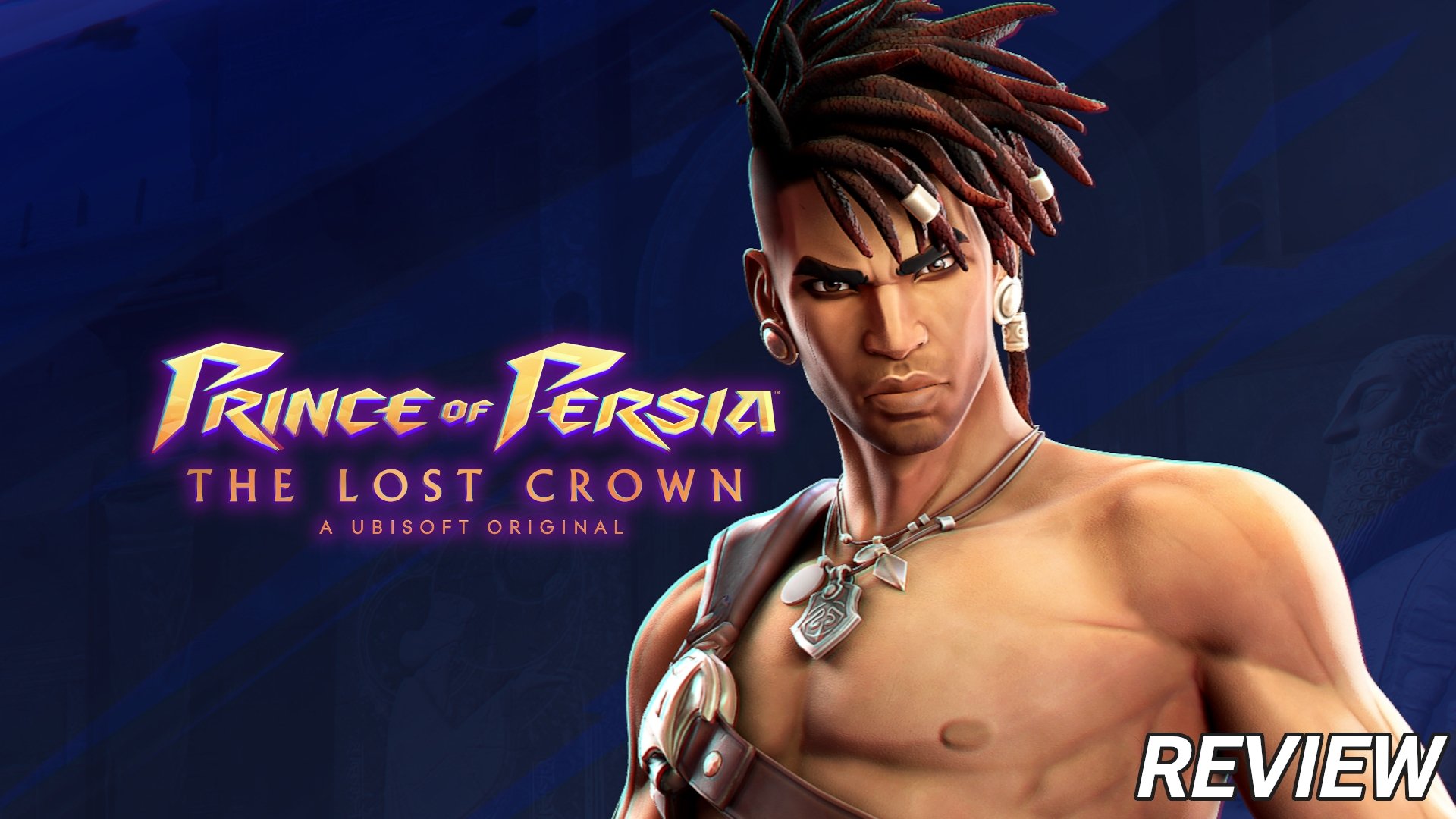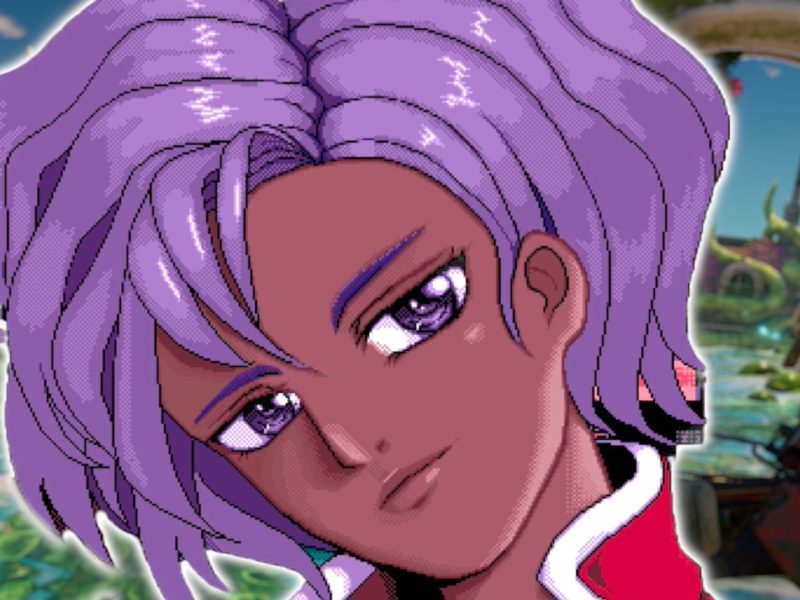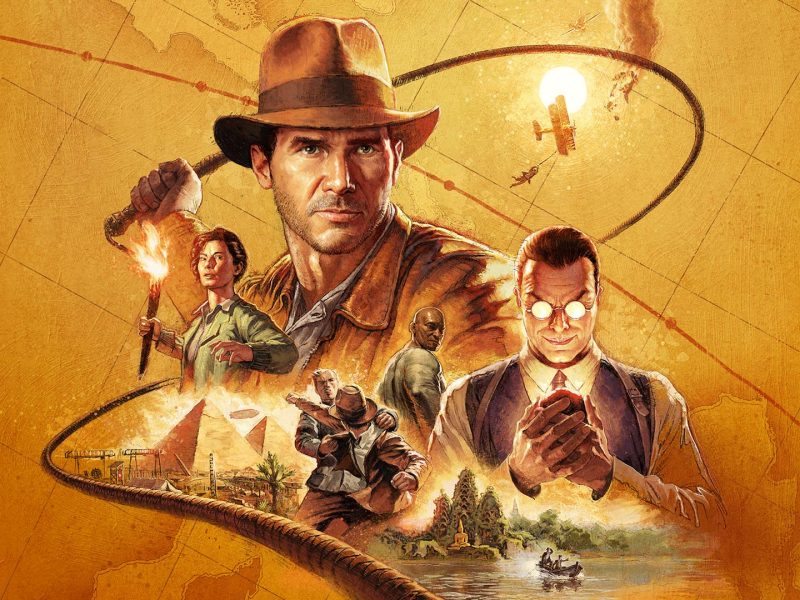The story follows Sargon, the youngest member of the elite order of seven Persian warriors known as the Immortals, led by an extraordinary warrior, Vahram. After Ghassan, the Prince of Persia, is abducted, the Immortals are sent on a rescue mission to Mount Qaf. It falls to Sargon to save the prince and stop a dire threat from destroying Persia — although you’d be forgiven for not picking up on the urgency of his task from the dry dialogue, which is easily the most disappointing aspect of an otherwise fun and exciting adventure.
Home of the god of time and knowledge, the Simurgh, a creature that has been missing for 30 years, Mount Qaf and its ancient city are locked in an unnatural state of time, where all of its mythological inhabitants suffer in a cursed existence. While Sargon already has special powers via an innate ability known as Athra, which I’ll get onto in a bit, Mount Qaf’s troubles help feed The Lost Crown with the time-manipulating mechanics that are a staple in the Prince of Persia franchise. Throughout his adventure, Sargon can learn new abilities to traverse the environment via the Simurgh’s feathers, offering him ways to teleport via Chakram throws, double jump, trap enemies and objects in other time dimensions until you want to fire them back out, and the like.
In true Metroidvania style, those abilities will have you travel back and forth around the sprawling map as you unlock ways to access new platforming sections, opening up paths to treasure, new routes across the map, and fresh challenges to undertake. By adding markers to the map, or even the in-game photo feature, you can pop an icon on the map to remind yourself where a previously unreachable route was, making life much easier when clearing up during the endgame. It feels like a natural fit for the franchise, and while it’s certainly a fairly large map, the use of fast travel stations and the eventual full arsenal of abilities soon sees you zipping around without much trouble.
A good portion of your gameplay is spent figuring out how to get from point A to point B without being skewered by spike pits, falling into endless depths, melted by spewing acid, or some other gnarly demise, but for the most part, Sargon feels receptive to your commands, so it’s usually satisfying as hell to overcome an obstacle.

Ubisoft has filled the world with all manner of obstructions, the majority of which are easy enough to conquer. There are, however, some undeniably frustrating sections that are rage-inducing, so don’t be fooled by the seemingly welcoming platforming sections you encounter regularly. That is of course by design, but it’s also where Ubisoft has added some of the coolest accessibility features, making Prince of Persia: The Lost Crown a great entry point for players new to the genre.
Visible markers for interactable objects like collectibles, aim and targeting assists, and auto unfreezing are great options, but one standout feature is the platforming assist. When toggled on, the more difficult platforming sections in the world will have portals on each end, offering you a way to bypass the section entirely. I didn’t use it during my playthrough, as I love the satisfaction of mastering the harder parts, and some of those sections contain hidden items, but now that I’m on my final run-through for collectibles — you’re given a “no turning back” message before fighting the last boss — being able to hop through a portal is extremely helpful for saving a bit of time. Love it!

Your adventure with Sargon takes you through 13 biomes in Mount Qaf, each offering unique gameplay experiences based on their setting, the majority of which home in on a particular traversal ability like teleporting. The Depths are grim, the Sacred Archives are filled with moving staircases, the Soma Tree is a wildland with a beautiful natural background offering you a sense of freedom, but none of the biomes other than the Raging Seas feels like it’s taking advantage of the unique time anomaly plaguing Mount Qaf. The Raging Seas are absolutely frozen in time, even allowing you to walk on water during sections, and it’s fantastic. The general setting is based on battling ships frozen in a storm, so lightning (while still hazardous to your health) is frozen as bolts, warriors are fighting each other in mid-air, debris and destroyed parts of ships are used as platforming sections, crashing waves are unmoving… it’s truly a magnificent set piece. The problem here, though, is that it’s left me feeling a little disappointed that other parts of the world aren’t such a spectacle. To be clear, the world is a beautiful place to explore, but it does feel like a bit of a missed opportunity.

Each biome’s theme also features unique enemies, leading to a fair bit of combat throughout the game. Again, with options to turn combat difficulty down so you can focus on the adventure, or up for a real challenge, you can tailor The Lost Crown to your liking. I’d suggest keeping difficulty to a good mid-level for the best experience, as turning it down removes the need to learn enemy movements, monopolize on Amulet-provided buffs, and make the most of Sargon’s Athra Surges — special combat abilities that use a resource called Athra you build up when fighting. Most of the usual enemies, which come in all shapes and sizes, ground- and air-based variations, and the like are all good fun, especially with the parry system, but the boss fights are mostly enjoyable when played with some difficulty.
Enemy attacks can come at you normally for basic parrying, or light up in red or yellow, changing how you can react to them — yellow attacks can be parried for an execution animation, while red attacks do more damage and must be dodged. This system plays out more like a game of Dragon Ball Z during boss fights as you both smash into each other with powerful attacks, and it generally feels great to jump into, but some of the bosses left me feeling more frustrated than satisfied at the end.

One particular boss, a bow-wielding enemy who I shan’t name for spoiler’s sake, spent so much time teleporting around the small combat zone that it just felt like a game of kiss chase, not a battle to death, as I dashed to him in an attempt to hit him at least once before the annoying git disappeared somewhere else. Small misfires like this take the excitement out of the adventure, making it feel like a chore.
Overall, it takes around 20 hours to reach the final boss, and a bit more to mop up all of the collectibles needed for the Prince of Persia: The Lost Crown achievements. There are a handful of side quests to experience as well, which you’ll naturally come across and complete as you go through, but certainly offer up some amusing personalities. The achievements aren’t live yet, but so far I’ve unlocked 17 achievements on my journey through Mount Qaf, the majority of which have been for combat encounters and collectibles.

Summary
Prince of Persia: The Lost Crown is a fantastic entry into the platforming and Metroidvania genres. While it falls short in some areas, which can leave you feeling somewhat frustrated, the overall experience is a sequence of satisfaction-inducing challenges. As the first new entry into the franchise we’ve seen in some time, The Lost Crown is a fantastic place for Ubisoft to start, and I’d like to see more.
* Tom spent around 25 hours dipping, ducking, and diving around Mount Qaf, unlocking 17 achievements along the way. A review copy was provided by Ubisoft and played on an Xbox Series X.


